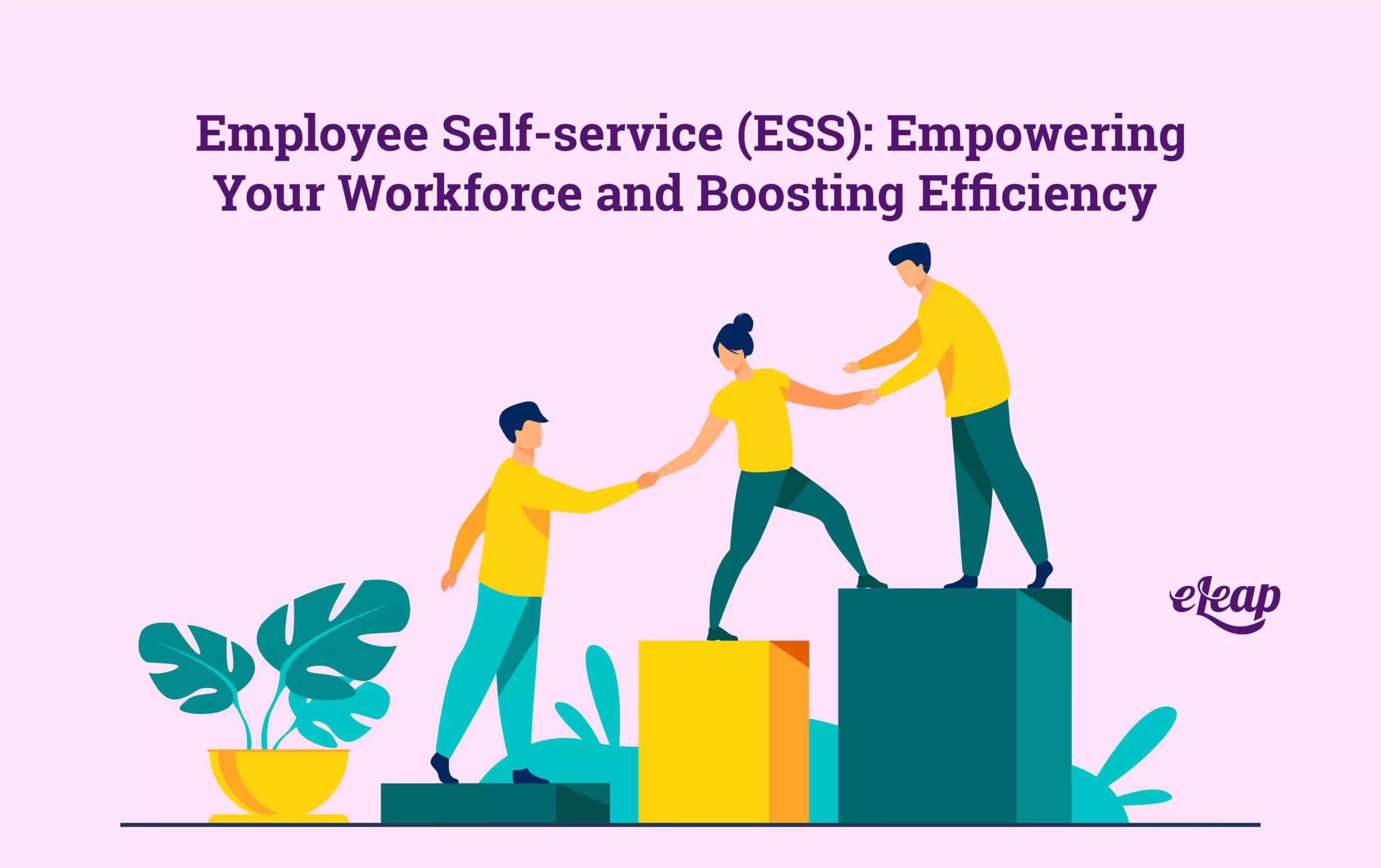Employee Self-service (ESS): Empowering Your Workforce and Boosting Efficiency

In today’s fast-paced digital world, businesses continually seek innovative ways to enhance their internal processes and streamline operations. Employee self-service (ESS) portals have emerged as a game-changer in the corporate landscape, providing employees with a centralized platform to manage their HR-related tasks efficiently. This article delves into the benefits and functionalities of ESS, outlining how it empowers your workforce and contributes to improved productivity and overall job satisfaction.
What is Employee Self-service (ESS)?

Employee self-service (ESS) is an online platform that enables employees to access and manage their personal information and perform various HR-related tasks independently. This platform acts as a virtual HR assistant, allowing employees to handle routine administrative tasks without needing constant intervention from HR personnel.
The Power of ESS in Empowering Employees
Personal Information Management
ESS platforms allow employees to update and manage their personal information, such as contact details, emergency contacts, and banking information. This self-service functionality saves valuable time for HR teams and ensures that employee data remains accurate and up-to-date.
Time and Attendance Management
Gone are the days of paper-based attendance tracking systems. ESS portals allow employees to log their working hours, request leaves, and view their attendance records effortlessly. This empowers employees to take ownership of their time management and fosters a culture of accountability within the organization.
Access to Payroll Information
Employees can access their payroll information, including pay stubs, tax deductions, and benefits details, through the ESS portal. This transparency fosters trust and confidence among employees regarding their remuneration, promoting a positive work environment.
Performance Appraisal and Goal Setting
ESS platforms facilitate seamless performance appraisal processes, enabling employees and managers to set goals, track progress, and provide feedback. This feature encourages open communication and collaboration, fostering continuous improvement and professional development.
Learning and Development Opportunities
With ESS portals, employees can explore the company’s various learning and development opportunities. They can enroll in training programs, access educational resources, and stay updated with industry trends, enhancing their skill sets and contributing to their career growth.
Enhancing Organizational Efficiency with ESS
Time Savings for HR Teams
Implementing ESS significantly reduces the administrative burden on HR teams. By automating routine tasks, HR professionals can focus on strategic initiatives, talent acquisition, and employee engagement, ultimately driving organizational success.
Reduced Errors and Improved Data Accuracy
Manual data entry is prone to errors, leading to discrepancies in employee records. ESS portals minimize such errors by allowing employees to input their information directly, ensuring accuracy and consistency in data management.
Increased Employee Engagement
Employees who have the autonomy to manage their HR-related activities feel more engaged and empowered. ESS fosters a sense of ownership, instilling a positive work culture that values employees’ contributions.
Cost Savings
Organizations can save on paper and printing costs associated with traditional HR processes by transitioning to an ESS system. Additionally, the time saved by HR teams can be redirected towards strategic initiatives, leading to cost efficiencies in the long run.
Security and Privacy Considerations
Data Security Measures
ESS platforms implement robust security measures to protect sensitive employee data, including data encryption, user authentication, and access controls. This ensures that only authorized personnel can access confidential information.
Compliance with Regulations
ESS portals comply with relevant data protection laws, ensuring employee information is handled following legal requirements and industry standards.
Implementing ESS in Your Organization
Choose a User-Friendly Platform
Selecting an intuitive and user-friendly ESS platform is crucial to ensure widespread adoption among employees. The platform should have a clean interface and easy navigation to enhance user experience.
Training and Support
Offer comprehensive training and ongoing support to employees during the transition to ESS. This will help address any concerns and ensure a smooth implementation process.
Communicate the Benefits
Clearly communicate the advantages of the ESS system to employees, emphasizing the convenience, time-saving benefits, and improved transparency it brings.
Key features of Employee Self-Service typically include:
Personal Information: Employees can update their contact details, emergency contacts, and other personal information, ensuring that the company has up-to-date records.
Payroll and Benefits: Access to view and download pay stubs, tax forms, and benefits information, enabling employees to monitor their compensation and benefits.
Time Off Requests: Employees can request time off, view their available leave balances, and track the status of their requests.
Attendance and Timesheets: A system for recording work hours, attendance, and submitting timesheets, facilitating accurate and timely payroll processing.
Training and Development: Access to training materials, course registrations, and progress tracking, fostering professional development opportunities.
Performance Management: Tools to set goals, provide feedback, and review performance evaluations, encouraging ongoing performance improvement.
Internal Communication: A platform for accessing company announcements, policies, and news, ensuring employees stay informed about important updates.
Document Management: Securely store and access company policies, handbooks, and other relevant documents.
Expense Claims: Employees can submit and track expense reimbursements, simplifying the reimbursement process.
By implementing Employee Self-Service, organizations can reduce administrative burdens, improve data accuracy, enhance communication, and empower employees to take greater control over their work-related matters. Additionally, it promotes efficiency and allows HR teams to focus on more strategic and value-added tasks.
Conclusion
In conclusion, employee self-service (ESS) portals are pivotal in empowering employees and optimizing HR processes. By giving employees more control over their personal information and routine HR tasks, organizations can unlock the full potential of their workforce. The implementation of ESS streamlines operations and fosters a culture of trust, engagement, and continuous growth.